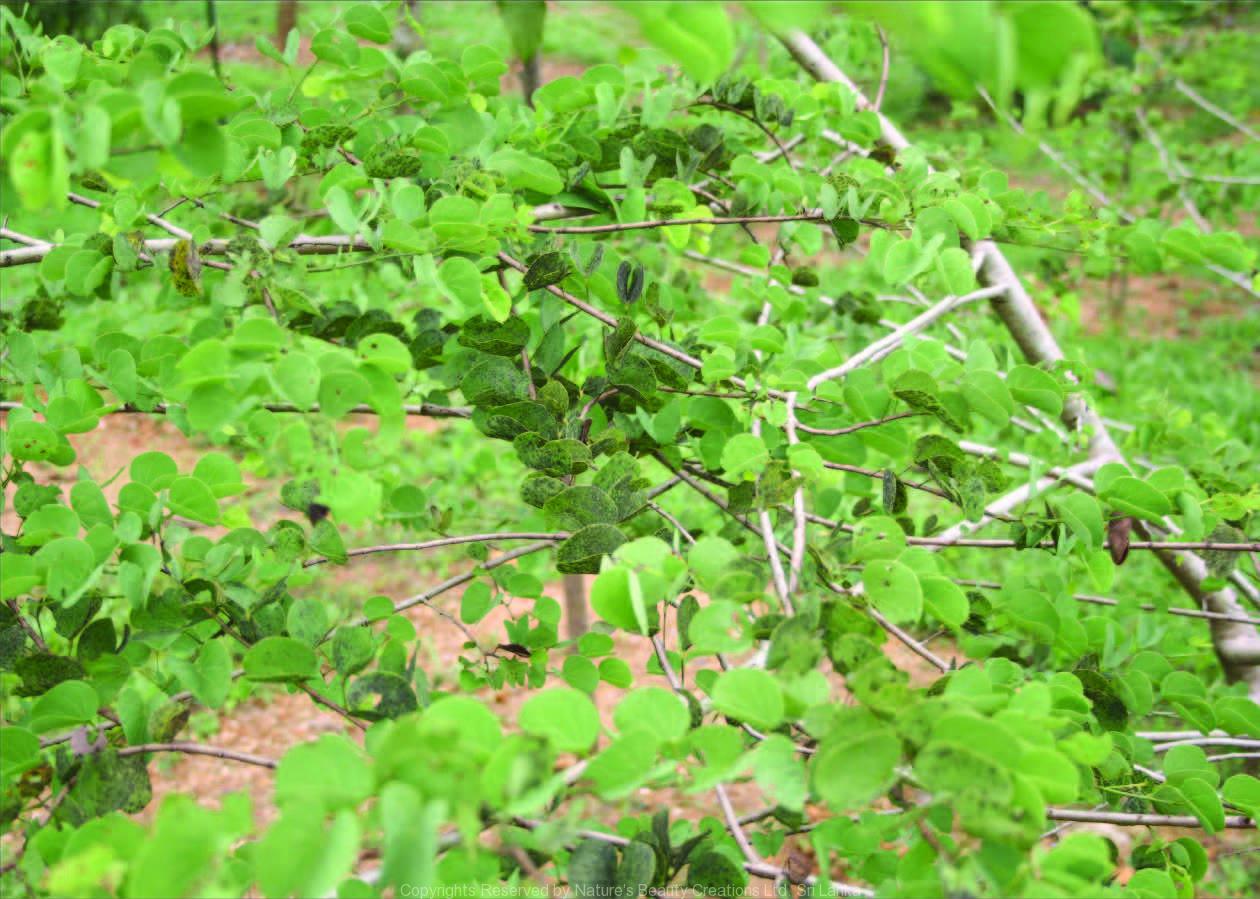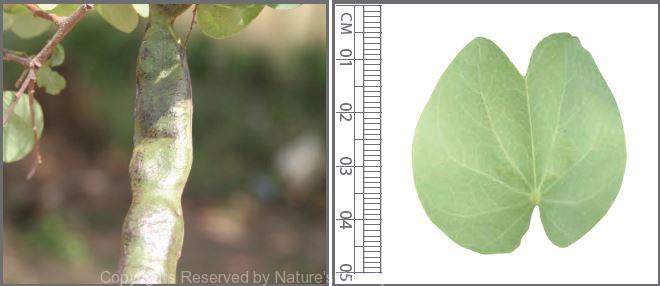

Traditional Knowledge
Useful plant parts :
Leaf and flower
Uses in traditional medicine :
- Decoction of the young leaves is taken for headaches occur as a result of fever caused by microbial activities
- Herbal drink prepared by dried flowers is prescribed for diarrhoea, internal bleeding, haemorrhages and to prevent abortions
- Young fruits are taken by patients suffering from dysuria
Scientific Research
Chemical constituents:
Benzoxepin: pacharin from heartwood; chroman derivatives and poly phenolic compounds: racemosol, racemosolone, long chain alkane: n-tetracosane, fatty acid: eicosanoic acid and stigmasterol, β-sitosterol, terpene: lupeol from root bark; galactolipids from leaves
Bioactivity :
Methanol extract of stem bark: anti-inflammatory, analgaesic, antipyretic, hepatoprotective, antimicrobial, antitumor; methanol extracts of flower buds: antiulcer; ethanol extract of leaves: lipid lowering, antihistaminic; polyphenolic compounds: antibacterial, antifungal
Clinical:
Note :
Popular shade tree in dry zone of Sri Lanka
References : Akhtar, A. H. and Ahmad, K. U., (1995), Anti-ulcerogenic evaluation of the methanolic extracts of some indigenous medicinal plants of pakistan in asprin-ulcerated rats, Journal of ethnopharmacology, 46, 1-6. Anjaneyulu, A. S. R. et al., (1984), Pacharin: A new dibenzo(2,3- 6,7)oxepin derivative from Bauhinia racemosa Lamk, Tetrahedron, 40(21), 4245-4252. Gupta, M. et al., (2004), Antitumor activity and antioxident role of Bauhinia racemosa against Ehrlich ascites carcinoma in Swiss albino mice, Acta Pharmacol Sin, 25(8), 1070-1076. Gupta, M. et al., (2004), Antioxidant and Hepatoprotective Effects of Bauhinia racemosa Against Paracetamol and Carbon Tetrachloride Induced Liver Damage in Rats, Iranian Journal of Pharmacology & Therapeutics, 3(1), 12-2. Gupta, M. et al., (2005), Anti-inflammatory, analgesic and antipyretic effects of methanol extract from Bauhinia racemosa stem bark in animal models, Journal of Ethnopharmacology, 28(3), 267-273. Jain. R, et al., (2008), Bioactivities of polyphenolics from the roots of Bauhinia racemosa, Arch Pharm Res, 31(12), 1525-9. Jain, R. et al., (2013), A new pentacyclic phenol and other constituents from the root bark of Bauhinia racemosa Lamk, Nat Prod Res. Nirmal, S. et al., (2011), Antihistaminic effect of Bauhinia racemosa leaves, J Young Pharm, 3(2), 129-31. Prabhakar, P. et al., (1994), De-O-methylracemosol: A tetracyclic 2,2-dimethylchroman from the roots of Bauhinia racemosa, Phytochemis- try, 36(3), 817-818. Sashidhara, K. V. et al., (2012), Galactolipids from Bauhinia racemosa as a new class of antifilarial agents against human lymphatic filarial parasite, Brugia malayi, Eur J Med Chem, 50, 230-5. Sashidhara, K. V. et al., (2013), Main extracts and hypolipidemic effects of the Bauhinia racemosa Lam. leaf extract in HFD-fed hamsters, Nat Prod Res, 27(12), 1127-31.
Copyrights Reserved By
Natures Beauty Creations




